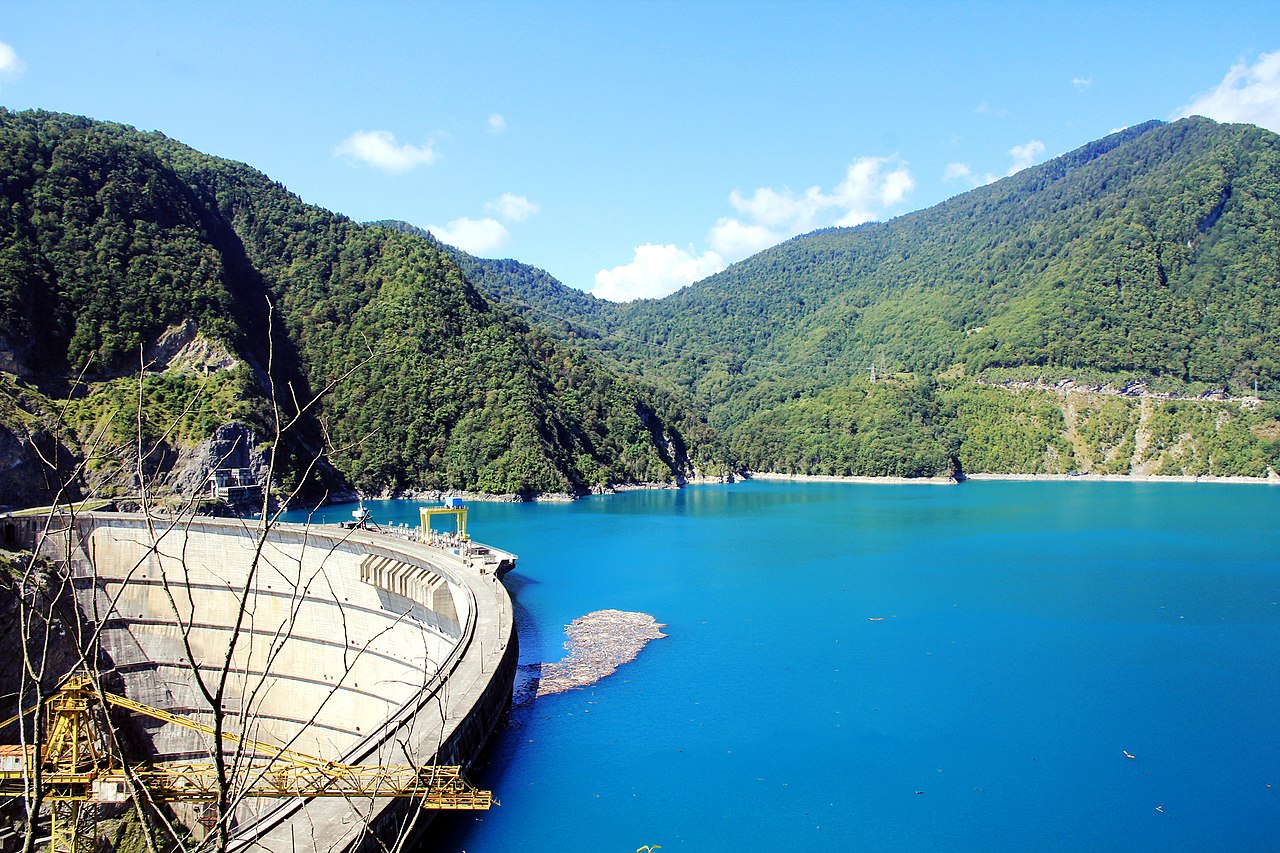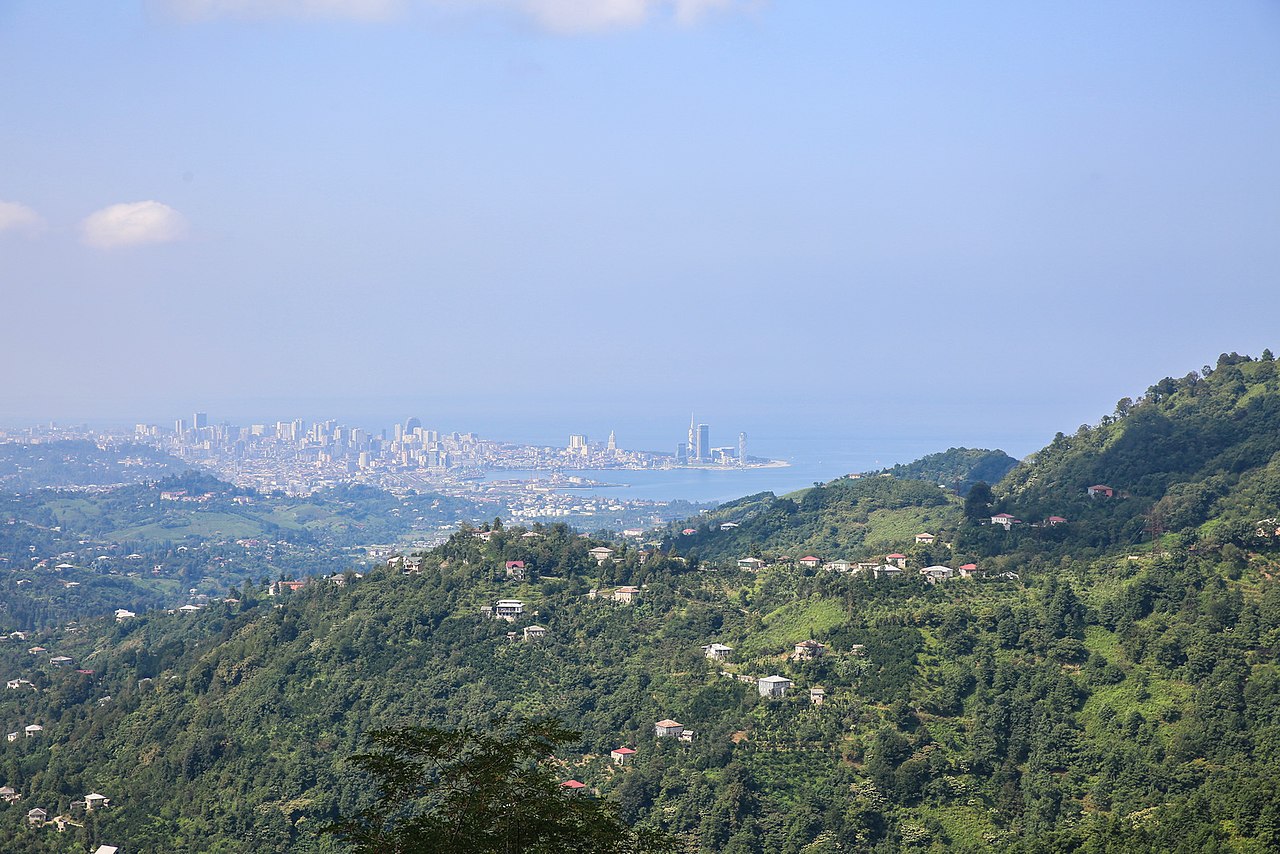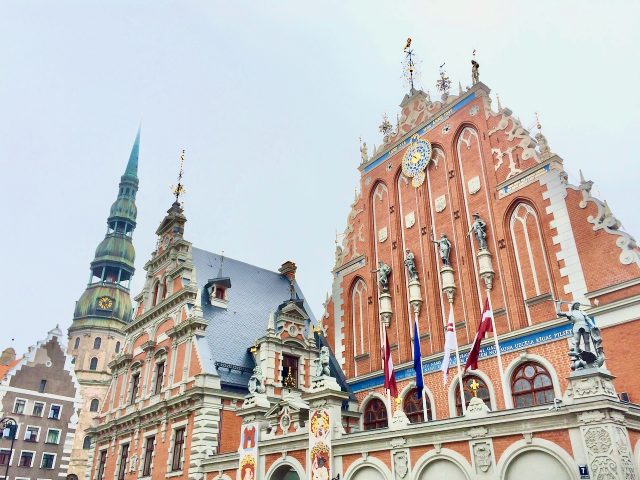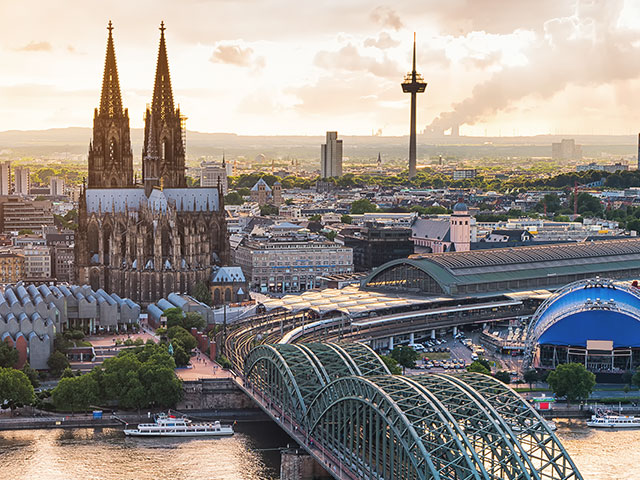 Zugdidi (ზუგდიდი in Georgian, ზუგიდი in Mingrelian, Зугдиди in Russian, Жәыргьыҭ in Abkhazian) is
a 41,494
inhabitants city by the small river Chkhoushi, in the western part of Georgia.
It's the capital and biggest town of the administrative region of Samegrelo-Zemo Svaneti, the 6th largest city of Georgia and the capital of Mingrelia. The city is also the main and almost only way to visit the region and de facto territory of Abkhazia.
Zugdidi (ზუგდიდი in Georgian, ზუგიდი in Mingrelian, Зугдиди in Russian, Жәыргьыҭ in Abkhazian) is
a 41,494
inhabitants city by the small river Chkhoushi, in the western part of Georgia.
It's the capital and biggest town of the administrative region of Samegrelo-Zemo Svaneti, the 6th largest city of Georgia and the capital of Mingrelia. The city is also the main and almost only way to visit the region and de facto territory of Abkhazia.
How do I arrive to Zugdidi?
Zugdidi is well connected with other towns in Georgia and the only way to enter Abkhazia from Georgia. - Train:
there are trains that arrive to Zugdidi from Kutaisi and from Tbilisi (aprox. 9 hours).
- Bus: there are marshutkas from places like Kutaisi (every 30 minutes; aprox. 1 hour 30 minutes), Batumi (8 daily buses; aprox. 3 hours), Mestia (daily; aprox. 3 hours), Borjomi (daily; aprox. 4 hours) in Borjomi-Kharagauli National Park and Tbilisi (every hour; aprox. 5.5 hours).
- Car:
if you rented a car, from Zugdidi it can be reached Jvari (aprox. 30 minutes), Poti (aprox. 1 hour 10 minutes) in the Kolkheti National Park, Vani (aprox. 1 hour 40 minutes), Kutaisi and Ozurgeti (aprox. 1 hour 50 minutes), Batumi (aprox. 2 hours 15 minutes), Mtirala National Park (aprox. 2 hours 20 minutes) or Mestia (aprox. 2
hours 45 minutes). It could also be reached from Ochamchire
(aprox. 50 minutes), Sukhumi (aprox. 1 hour 30 minutes) or Gagra (aprox. 2 hours 45 minutes)
in the de facto republic of Abkhazia.
History
The city was first mentioned in the 16th century. During the reign of Levan II Dadiani, the Principality of Mingrelia (or Odishi) was the strongest among the kingdoms of western Georgia. Zugdidi was since the 17th century a capital of the principality and one of the main cities in whole Georgia. Ottoman forces seized and burnt Zugdidi during the Crimean War (1853-1856). The principality was abolished by the Russian Empire in 1867. Then Zugdidi became an administrative center of Zugdidi Uyezd (part of the Kutais Governorate) till 1918, when it became a part of the Democratic Republic of Georgia. It was the center of the Zugdidi Raion of the Georgian Soviet Socialist Republic from 1930 and then in independent Georgia from 1991. Many buildings in Zugdidi were heavily damaged during the Georgian Civil War 1992-1993 and here it was located the administration of the first President of Georgia, Zviad Gamsakhurdia, and the Supreme Council of the Republic of Georgia in 1993.
What can I visit in Zugdidi?
These are Zugdidi's main attractions:
Dadiani Palace: palace built for the prince of Mingrelia David Daviani in 1840, considered to be one of the most eminent palaces in Caucasus and the most European-like of the palaces in Georgia. Its architect, Edgar Jacob. Rice, was inspired to build this palace by Vorontsov Palace in Alupka (Crimea). Inside it's situated Dadiani Palaces Historical and Architectural Museum (10-18 Tue-Sun; 5₾/ 1₾
adults/ students), a museum with origin in 1848, when the prince of Samegrelo David Dadiani used the palace to show his guests the archaeological and numismatic collection from the Ruins of Nokalakevi. Today it exhibits the collections of Dadiani family of medieval European armor and weapons, ethnographic objects, archaeological findings, religious icons and crosses, and fine art; as well as an exhibition with the history of Zugdidi. The museum has one of the four bronze death masks of Napoleon, acquiered when Princess Salome Dadiani married Napoleon's nephew, Achille Murat.
- Zugdidi Cathedral: cathedral of the Georgian Orthodox Church that was built in Georgian style in 1830, seat of the Zugdidi and Tsaishi Diocese. Its construction was promoted by tsar Alexander I of Russia and he also returned a replica of the famous icon Blachernitissa (that saved more than once Constantinople from the invasion of enemies, according to the legend), given in 1805 by Mengrlian princes to the emperor (it represented one of the main values of the Dadiani princes). The church has also some relics like, for example, the robe and part of the belt of Virgin Mary or part of the sponge from which Jesus Christi drank vinegar (that arrived Georgia from Constantinople when the Ottoman Empire took it in 1453).
- Zugdidi Botanical Garden (free): botanical garden that was built in the late 19th century by the Prince of Mingrelia David Dadiani and his wife Ekaterina Chavchavadze-Dadiani, near their residence. Today it has over 80 genus of worldwide trees, shrubs and plants, specially focused in exotic and subtropical plants with origin in places like southeast Asia, India, Japan, the Mediterranean and the Americas.
- In the west of Zugdidi, driving 13 km there's Chakvinji Fortress. It's a fortress on the banks of the Chanistskali river where David Dadiani was born (1813), used in the 18th century as the summer palace of Mingrelia. However, it was originally built during the Kingdom of Abkhazia in the 8th century, reconstructed in the 12th century. It was used by Mensheviks during the Russian Civil War, expelled by Bolsheviks.
- Going towards Abkhazia, 5 km far from Zugdidi and almost by the border, the visitor can take some time to visit Rukhi Fortress. This fortress, whose construction is attributed to by Levan II Dadiani in 1647, was an important and well-fortified fortification of the Principality of Mingrelia. Its was very important because it was in the road that connected the principality with Abkhazia and the North Caucasus. The fortress of Ruhi was destroyed in 1725 but was soon rebuilt. It lost its significance in the early 19th century and got ruined until the status it has today.
.JPG/800px-Dadiani_palace_005_(2).JPG) |
Dadiani Palace and Zugdidi Cathedral
|
 |
Zugdidi Botanical Garden
|
Around Zugdidi there are some cathedrals and churches with importance. Going 14 km south from the city it can be visited Tsaishi Cathedral, a Georgian Orthodox domed church from the 13th-14th centuries, seat of the Dioceses of Zugdidi and Tsaishi (one of the oldest episcopal departments in Georgia, whose existence goes back to the 6th-7th centuries). It was closed and abandoned with the arrival of the Bolsheviks, but restored from onwards 1989. The church has stone carvings on its exterior and some frescoes on its interior, although in very poor conditions. The other cathedral is situated 26 km north, in Tsalenjikha (წალენჯიხა in Georgian and in Mingrelian), 6,388 inhabitants. Tsalenjikha Cathedral is a Georgian Orthodox .jpg/1280px-Tsalenjikha_cathedral_(61).jpg) |
Interior and frescoes of Tsalenjikha Cathedral
|
cross-in-square church built in the 12th-14th centuries. It is known for an unique cycle of murals which exemplifies the direct import of Byzantine Palaeologan style and artists to Georgia, and for being the familial chapel of the House of Dadiani (there used to be a palace of this dynasty outside the church but today just lays in ruins). The interior of the church was frescoed by Cyrus Emanuel Eugenicus from Constantinople (his murals are regarded as on of the best examples of late Byzantine Palaeologan style), and there are bilingual Greco-Georgian inscriptions.
 |
Enguri Dam and Reservoir
|
From Zugdidi, one of the most common destinations is exploring Svaneti and going north, to places such as Mestia. There are plenty of places to visit when driving north such as Enguri Dam, 40 km north. This hydroelectric dam by river Enguri is currently the world's second highest concrete arch dam and one of Europe's largest dams, partially located in Abkhazia. It is a beautiful place with a wide panorama of the mountains and blue lake. Before Enguri Reservoir, the river Enguri flows the beautiful Enguri Canyon. All these is located in the town of Jvari (ჯვარი in Georgian and Mingrelian), a place with 4,361 inhabitants that is popular for being the birthplace of Meliton Kantaria, the sergeant of the Soviet Army who was photographed hoisting a Soviet flag Banner of Victory over the Reichstag following the final defeat of Nazi Germany.  |
Tobavarchkhili Lake
|
Also in the north of Zugdidi there's an area known as Samegrelo Planned National Park where it can be enjoyed . Some of the highlights are Intsra Waterfall, a 50 m high waterfall with a cave that is reached after a 10 km trail from Jvari; Kuakantsalia, boulder that is also called the Swinging Rock that can be reached in 2-day hike (Kuakantsalia Route, 29.6 km); or Tobavarchkhili Lakes, group of very beautiful lakes on the Egrisi range that has to be reached by taking a route known as Silver Lakes Route (45 km) and around 3-4 days are needed to do it.
 |
Martvili Canyon
|
The road reaches the impresing Martvili Canyon (10-18 Tue-Sun; 17.25₾/ 5.50₾
adults/ kids),
a natural monument that has a 700 m long stone-paved circular route and
crosses the Dadiani historical trail. Visitors can enjoy a 300-m boat
tour on river Abasha and beautiful views of the mountain river canyon.
Around the canyon the most important town is Martvili (მარტვილი
in Georgian and in Mingrelian), inhabitants small town that has managed
to keep its rural Mingrelian atmosphere. Here it can also be found Matvili Monastery,
a monastic complex with origin in the 7th century on the site of a
pagan cultural center where there used to be a sacred oak (after the
conversion of the population to Christianity the tree was cut down). .jpg/1280px-Salkhino_mansion_(6).jpg) |
Dadiani Summer Palace
|
It
was rebuilt by king George II of Georgia in the 10th century after the
destruction of the previous church. It keeps frescoes from the 14th-17th
centuries and is sometimes regarded as one of the most beautiful
monasteries in Western Georgia. In the surrounding area, in the small town of Salkhino (სალხინო in Georgian and in Mingrelian), it's also possible to find Dadiani Summer Palace, summer residence of Dadiani family that was built during the reign of David Dadiani’s father, Levan V Dadiani. It was ravaged under the Soviet regime but then restored, keeping its original 18th century wine cellar. Around it, a garden cultivated by the princes of Mingrelia can be found, Salkhino Garden.
Where can I eat in Zugdidi?
Zugdidi has a humble culinary offer but there are some places where
eating in a good ways, and trying local dishes. Some of the best examples are the following medium-prize Georgian restaurants: Diaroni [დიარონი] (Konstantine Gamsakhurdia 9) or El Barco (Rustaveli 77).
 Mtirala National Park (also know as მტირალას ეროვნული პარკი in Georgian) is a 281.3 km²
park situated in the southwest of Georgia (not far from Turkey), in the Autonomous Republic of Adjara. This place is said to be the most humid place not only in Georgia, but also, in the whole Europe (it was one of the wettest areas of the former Soviet Union too).
Mtirala National Park (also know as მტირალას ეროვნული პარკი in Georgian) is a 281.3 km²
park situated in the southwest of Georgia (not far from Turkey), in the Autonomous Republic of Adjara. This place is said to be the most humid place not only in Georgia, but also, in the whole Europe (it was one of the wettest areas of the former Soviet Union too).








 07:47
07:47
 Banknotemaniac
Banknotemaniac
 Posted in:
Posted in: 
.JPG/800px-Dadiani_palace_005_(2).JPG)


.jpg/1280px-Tsalenjikha_cathedral_(61).jpg)


.jpg/1280px-Salkhino_mansion_(6).jpg)